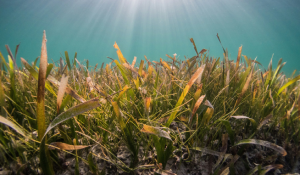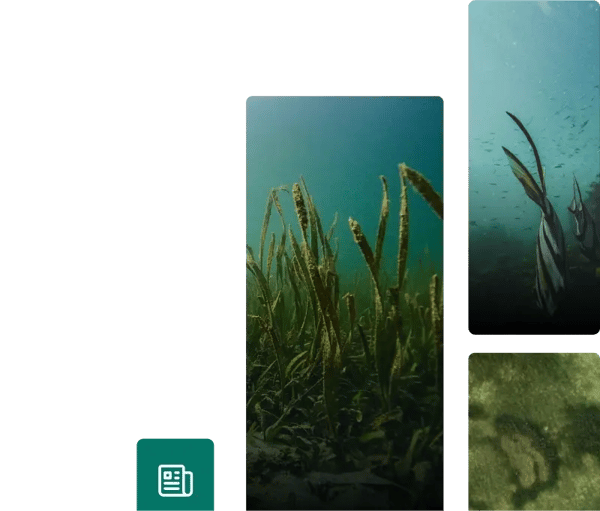SDG 14: Life Below Water: Why It’s Time Businesses Paid Attention
In an increasingly interconnected world, the United Nations Sustainable Development Goals (SDGs) have emerged as a global blueprint to guide nations, businesses, and individuals towards a more sustainable and equitable future. Among these 17 goals, SDG 14 – "Life Below Water" – has become a crucial area for both environmental protection and corporate responsibility. This goal focuses on conserving and sustainably using the oceans, seas, and marine resources, vital elements that many industries depend on. Yet, despite its importance, many businesses still overlook the impact of their operations on marine ecosystems and the measures they can take to protect and support them.
As the urgency of climate change and biodiversity loss intensifies and environmental awareness continues to rise, businesses are increasingly setting climate-related Science-Based Targets, Net Zero targets, and specific biodiversity goals to restore and conserve ecosystems as part of their sustainability strategies. Companies that fail to engage with SDG 14 may find themselves falling behind in both corporate responsibility and consumer expectations.
For more information on the relationship between Blue Carbon and the SDGs, please read our article.
What is SDG 14?
SDG 14 focuses on preserving the world’s oceans and marine life, which are vital to the health of the planet and human society. The oceans are not only home to countless species, but also play a pivotal role in regulating climate, supporting global trade, and providing food and livelihoods for millions of people.
The main targets include:
- Reducing marine pollution, especially plastics, by at least half by 2025.
- Preventing and significantly reducing marine acidification.
- Protecting and restoring ecosystems, including coral reefs and marine biodiversity.
- Increasing scientific knowledge, research, and technology for ocean health.
- Strengthening the conservation of marine and coastal areas.
Why should businesses care about SDG 14?
While SDG 14 may seem most relevant to sectors directly tied to marine environments, such as fishing, shipping, or coastal tourism, all businesses, regardless of industry, are connected to ocean health in some way. Oceans are foundational to the global climate system, regulate weather patterns, and absorb about a third of carbon emissions. They also play a vital role in the production of oxygen and the maintenance of biodiversity, both of which underpin the very ecosystems and supply chains many companies rely on.
Even businesses located far from coastlines can contribute to ocean degradation through carbon emissions that drive ocean acidification, plastic packaging that ends up as marine pollution, or unsustainable sourcing practices that contribute to overfishing and habitat loss. Conversely, companies that integrate ocean protection into their sustainability strategies can enhance their brand reputation, improve resilience, and attract environmentally conscious consumers and investors.
Failing to act on SDG 14 is increasingly seen as a missed opportunity—not just for the planet, but also for business innovation, risk management, and long-term competitiveness. For more on Blue Carbon policy and conservation initiatives, please read our article.

What actions can businesses take to support SDG 14?
Support Blue Carbon Projects:
One of the most impactful ways companies can align with SDG 14 is by supporting blue carbon ecosystems, such as mangroves, seagrasses, and salt marshes. These coastal habitats are highly efficient carbon sinks and act as natural buffers against storm surges, while also providing critical habitats for marine species. For more information on where mangroves sit, please read our article.
Businesses can support blue carbon projects through:
- Voluntary carbon markets, by purchasing blue carbon credits to account for their residual emissions, through actors like ClimateSeed.
- Direct investment in conservation and restoration activities.
- Partnering with organizations working on the ground to protect coastal ecosystems.
Supporting blue carbon not only helps mitigate climate change (aligning with SDG 13), but also directly contributes to marine biodiversity and coastal resilience. See a walkthrough of various mangrove projects we have recently visited in Mexico here.
Reduce Plastic Use and Marine Pollution:
Businesses—especially in manufacturing, packaging, food, and retail—can help reduce marine pollution by:
- Minimizing single-use plastics in products and packaging.
- Investing in biodegradable materials and circular design.
- Participating in or funding ocean clean-up initiatives.
- Collaborating with waste management partners to ensure responsible disposal and recycling.
Adopt Sustainable Sourcing Practices:
Companies that rely on seafood or products derived from the ocean should ensure their sourcing is sustainable. This includes:
- Partnering with certification bodies, such as the Marine Stewardship Council (MSC).
- Avoiding overexploited species in supply chains.
- Working with suppliers to promote traceability and ecosystem protection.
Measure, Disclose, and Mitigate Impact:
Understanding and disclosing a company’s marine impact is an important step. Businesses can conduct environmental impact assessments that include marine ecosystems by reporting on ocean-related risks and opportunities in sustainability disclosures.
Businesses should go beyond just carbon and climate. They should set science-based targets for nature and address their environmental impacts across biodiversity, land, fresh water, and ocean, aligned with frameworks, such as the Science-Based Targets Network (SBTN).
Educate and Advocate:
Lastly, companies can use their voices to raise awareness about ocean health, both internally (among employees) and externally (among consumers, partners, and the public). Advocacy for stronger marine protection policies or collaboration in industry-wide sustainability efforts can amplify impact beyond individual operations.
Incorporating SDG 14 into business strategies is not just good for the oceans, it’s good for business. From risk mitigation and regulatory preparedness to innovation, brand value, and climate leadership, aligning with SDG 14 offers a broad range of benefits. By supporting initiatives like blue carbon conservation and restoration, reducing pollution, and adopting sustainable practices, companies across all sectors can play a vital role in safeguarding life below water and securing a more resilient, sustainable future for all.
If you would like to support marine ecosystem conservation projects, feel free to contact us.
Sources:
- United Nations Sustainable Development Goals (SDG 14)
- Science Based Targets Network (SBTN)
- Marine Stewardship Council (MSC)
- UN Environment Programme – Blue Carbon Initiative
- WWF – Oceans and Marine Conservation
- The Ocean Conservancy
- Global Mangrove Alliance
- UN Global Compact – Sustainable Ocean Principles
- International Union for Conservation of Nature (IUCN) – Blue Carbon
Common Q&As
The United Nations Ocean Conference (UNOC) is one of the world’s most important platforms for addressing the health of our oceans. As ocean threats intensify, from rising sea levels to plastic pollution and acidification, UNOC brings together governments, businesses, scientists, indigenous communities, and civil society to rally behind solutions.
For more information, read our article: What to Expect From UNOC 2025 in Nice.
There are 4 concrete actions that businesses can start implementing today.
- Reduce plastic waste
- Decarbonize the maritime sector or your company’s supply chain
- Adopt sustainable practices
- Support blue carbon projects
- Read our article for more
Although mangrove forests are widely distributed across more than 120 tropical and subtropical countries and territories, they are rare globally, covering less than 1% of all tropical forests worldwide. Some locations include; Mexico, Mozambique, and Indonesia.
For more information refer to our article: Types of Property on which Mangroves Ecosystems Sit.
Share this
You May Also Like
These Related Stories

What to Expect From UNOC 2025 in Nice?

How can my company help preserve the ocean?


